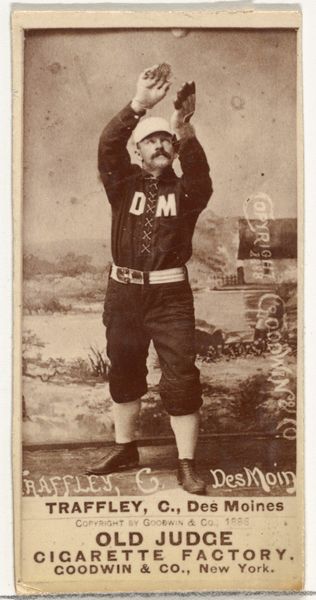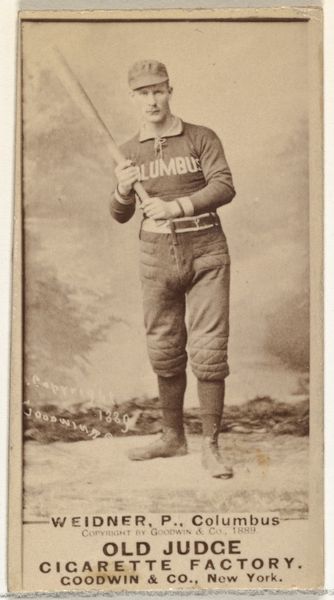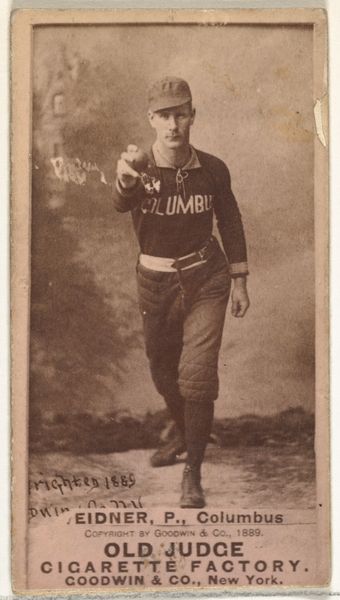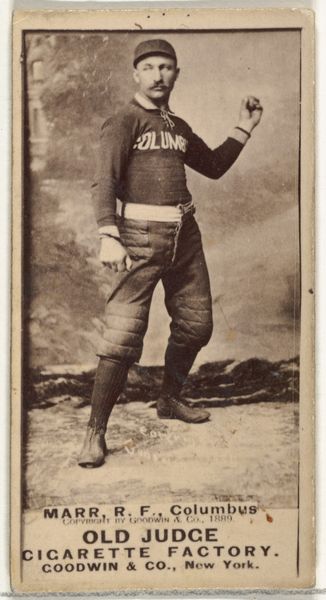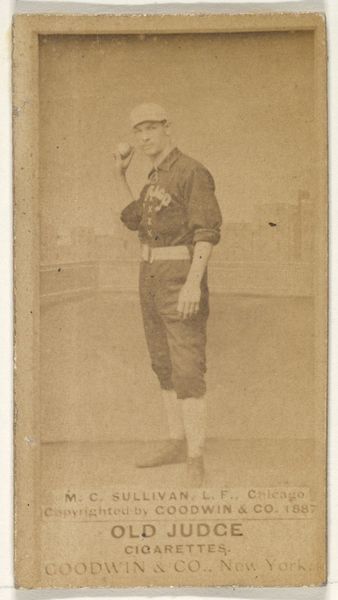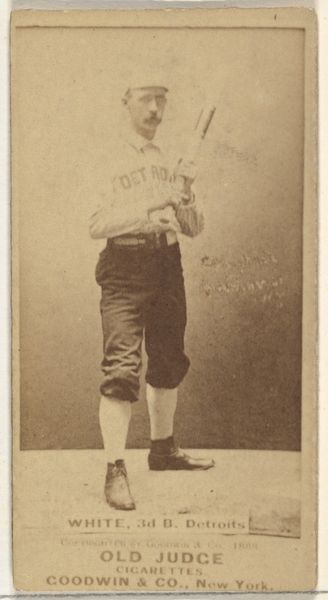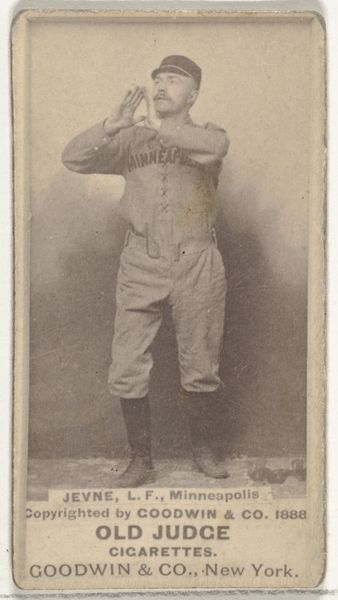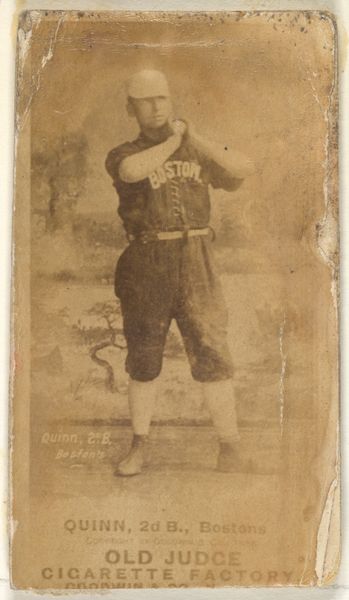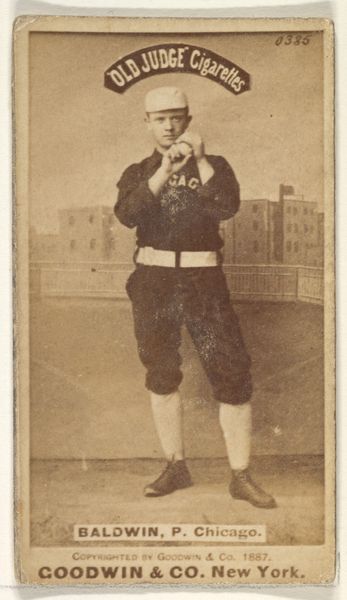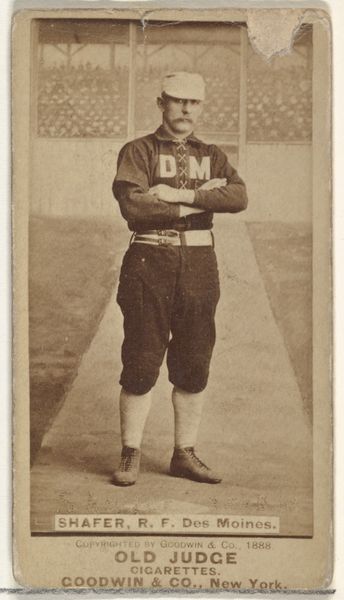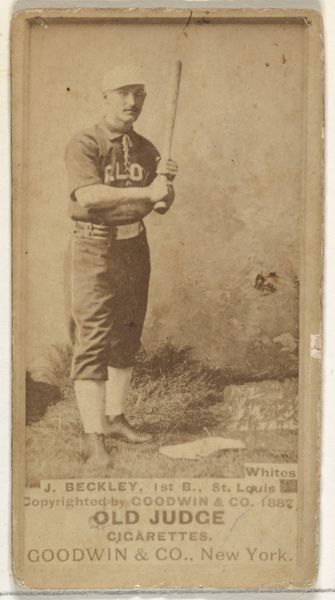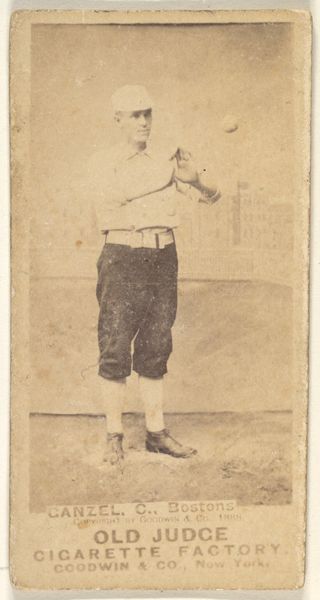
George W. Shafer, Right Field, Des Moines Prohibitionists, from the Old Judge series (N172) for Old Judge Cigarettes 1888
0:00
0:00
drawing, print, photography
#
portrait
#
drawing
# print
#
baseball
#
photography
#
historical photography
#
19th century
#
men
#
genre-painting
#
athlete
Dimensions: sheet: 2 11/16 x 1 3/8 in. (6.9 x 3.5 cm)
Copyright: Public Domain
Editor: Here we have "George W. Shafer, Right Field, Des Moines Prohibitionists" from the Old Judge series, a photographic print dating back to 1888. The sepia tone gives it a lovely vintage feel. What immediately strikes me is the deliberate pose and how it creates a sense of quiet anticipation. How do you interpret this work? Curator: Initially, one must observe the meticulous arrangement within the pictorial space. The figure's stance, the raised arm, and the subtle tilt of the head are deliberately positioned, forming a series of interlocking geometric shapes. Note the contrast between the textures: the smoothness of the baseball, the coarse weave of the uniform, the velvety backdrop. How does this interplay of textures contribute to your understanding? Editor: I suppose it adds depth and emphasizes the materiality of the photograph itself. It's not just an image, but an object with a tactile quality. Curator: Precisely. Also, consider the chromatic scale: a very restricted range, almost monochromatic, forces the eye to appreciate tonal subtleties. The semiotic function of the baseball uniform is worth considering here. What message do you believe the artist encoded when dressing him up with this uniform? Editor: That is fascinating. It highlights that every element, from color to costume, contributes to the work's overall composition and meaning. The artist clearly manipulated the components of this picture, rather than it being a 'snap-shot'. Curator: Indeed, and this manipulation elevates it beyond mere documentation. The image becomes a formal arrangement of shapes, tones, and textures designed to be interpreted aesthetically. What new insight are you left with? Editor: I now see how careful attention to form unlocks a deeper appreciation, it’s not enough just to see *what* it is, you have to see *how* it is.
Comments
No comments
Be the first to comment and join the conversation on the ultimate creative platform.
